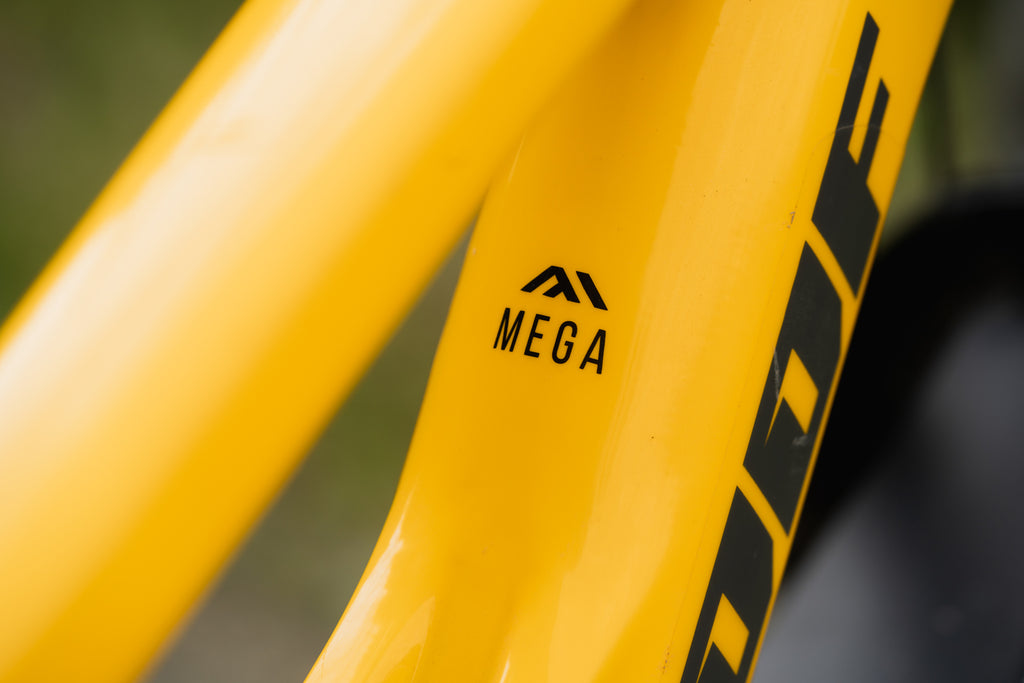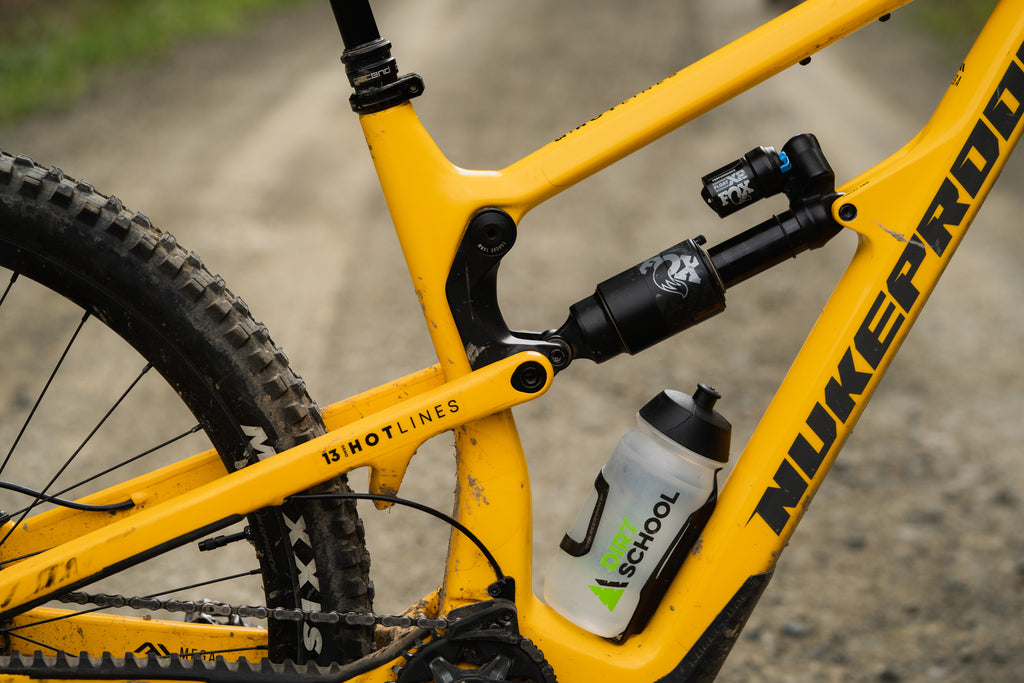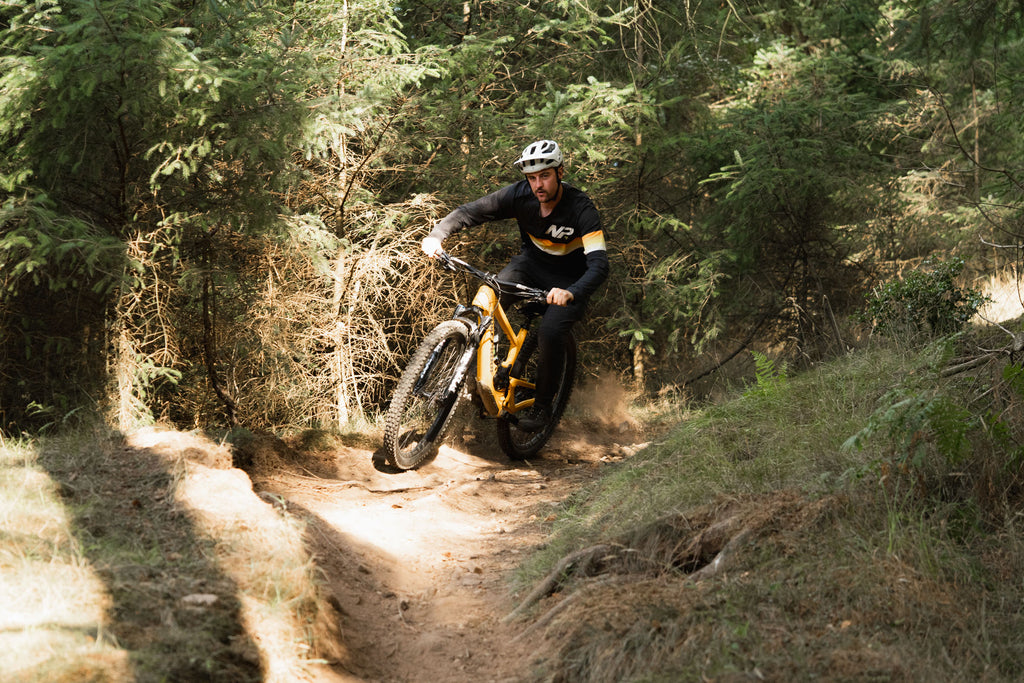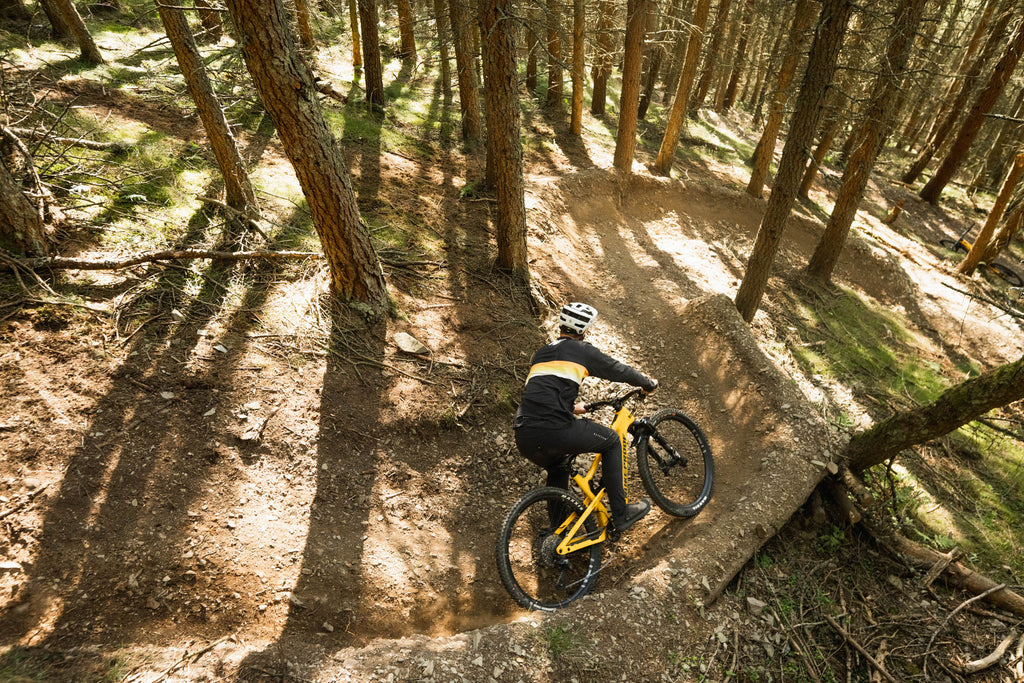Mega versus Giga - What's the Difference?

The Nukeproof Mega is synonymous with enduro racing. Named after the infamous Megavalanche and now in its 4th iteration, the Mega is a textbook case of evolution over revolution and has, until recently, been unchallenged as the most capable single crown bike in Nukeproof’s lineup.

However in 2021 Nukeproof, released a stablemate to the Mega. Beginning as a brainstorming exercise to see if a pedalable version of the Dissent downhill bike could be the ultimate enduro/bike park platform, the project quickly escalated into development of what we now know as the Giga.
Both bikes are out and out enduro bikes, the Mega with 160mm of rear wheel travel to the Giga’s 170mm, both in 290 format (the Mega 297 gets 165mm in the back and the Giga 297 gets 180mm) and both are used at the pointy end of enduro racing. Looking at the spec sheets of the two bikes, the shared intentions of the two bikes are laid bare. With virtually identical specs you can take your pick between the Mega and Giga based solely on the ride characteristics of each frame, with no compromises in spec between the two.

So here we have two bikes, both designed to win EWS races, with identical specs, but using totally different suspension designs. We got our hands on both a Mega 290 Elite and Giga 290 Elite, both in size large, and headed to the trails to try and find the differences, and similarities, between these two bikes.
Suspension and Geometry
The biggest and most obvious difference between these two bikes is their suspension layouts. The Mega uses a Horst link platform while the Giga uses a linkage driven single pivot design; the Mega is overall less progressive, 17% as opposed to 25.5% for the Giga in its more linear setting, rising to 29% in the progressive setting.

A higher overall leverage rate at the beginning of the stroke gives the Giga a more supple feel at the top of the suspension travel and provides more bottom out resistance on big impacts. This supple and progressive suspension design, coupled with the long travel, could give the Giga the edge on rough terrain but potentially at the expense of feeling sluggish on anything but.

The Mega uses a much flatter leverage curve than the Giga; the lower overall progression will give the Mega a more consistent and predictable feel throughout the travel with a sharper, more lively ride given by its lower leverage rate. Still more than capable of tackling rough terrain, the Mega should be less of a chore to ride on mellower terrain than the Giga.
Both bikes start at a similar level of anti-squat, 96% for the Giga and 98% for the Mega. However, as each bike goes through its travel, the Giga drops significantly more than the Mega, 51% to the Mega's 66% at bottom out. The flatter anti-squat curve of the Mega will give it less bob under power when pedaling, however this increased level of anti-squat could give the Mega more pedal kickback on square edged hits.

Each bike also has fairly different anti-rise numbers. A bike with over 100% anti-rise will squat into its travel under braking, and a bike with under 100% will extend its rear suspension under hard braking. The Giga has much higher anti-rise curves than the Mega, with the Giga sitting very close to 100% anti-rise at sag. What this means is that under hard braking the Giga will remain neutral while the Mega will try to rise up in its travel.
Fit and Initial Setup
Both bikes share a 475mm reach in size large, giving a comfortable, roomy fit without either bike ever feeling stretched out. The Mega uses a slightly taller stack height than the Giga, this raises the bars slightly and gives a feeling of being more “in the bike” on the Mega.
Initial suspension setup on both bikes is very straightforward, however the Giga comes with the ability to change the amount of progression in the rear suspension. Flipping the lever on the main pivot up increases the progression giving a more supple beginning stroke and more bottom out resistance. For this test we tried both settings and ended up preferring the more linear setting with the air shock fitted to the test bike.

Climbing
The fact that both of these bikes climb well should be no surprise. Long stroke dropper posts and wide range drivetrains allow almost any bike to be winched to the top of most hills. What is surprising is just how comfortable both the Mega and the Giga are for prolonged fireroad climbs.

Both bikes have steep effective seat tube angles of 78°, however the actual seat tube angle on the Mega is slightly slacker than the Giga’s. What this translates to in the real world is a feeling of a more compact, sit up and beg, style of cockpit on the Giga. As the climbs get steeper the Giga’s more centered riding position means you can sit and spin with no massive changes in body position to keep the front wheel on the ground. Conversely, the ever so slightly more relaxed pedaling position on the Mega means it’s more comfortable on flatter pedals where the Giga’s seated position can feel like it’s putting a lot of pressure through your hands.
On technical climbing sections both bikes perform quite well, but the Giga has a tendency to compress into its travel on big steps, making it more necessary to reach down for the climb switch than on the Mega, which sailed up everything in front of it.
In short, the Mega feels like a more well rounded climber than the Giga. Where the Giga excels at spinning up relatively steep fire roads, the Mega will outperform on uphill technical sections and feels more comfortable on flatter pedals, whilst still being very comfortable on fire road sections.
Descending
The climb is over; the dropper is down and the climb switch has been flipped off, it’s time to use these bikes for what they were designed to do, tackle the roughest and most technically demanding terrain on the EWS circuit.

It’s here where the differences between the two suspension designs really shine. The Giga spurs you on as a rider to really drive the bike hard into trail features, with the progressive, and supple off the top, suspension finding plenty of traction and delivering heaps of confidence, also noticeable is the increased stand over height on the Giga, with the low-slung frame allowing a huge range of movement across the bike.

The Giga’s slightly slacker and longer geometry really breeds a confidence inspiring ride, the extra 5mm on the chain-stay gives the bike a very stable feeling and gives the rear wheel a locked in feeling on supported turns but can be a bit more of a chore on very tight turns.
All that progression can make the Giga feel a touch more fatiguing on longer descents than the Mega, especially when the trail is flatter requiring well timed pumps to keep your momentum going.

The Mega’s slightly more conservative geometry and less progressive suspension design make it a more well rounded descender, and a bike that is easier to hop on and get along with straight away; where the Giga took a couple of rides to get setup properly, the Mega felt comfortable from the off.
A more linear suspension design gives a rear end that feels more predictable throughout the travel as there are no big changes in leverage rate, this coupled with the slightly steeper geometry create a bike that is very easy to ride fast on a huge variety of terrain.

The Mega’s shorter wheelbase and chain-stays make the bike a breeze to flick between turns and squeeze through tight gaps, coupled with the comfortable fit and easy ride characteristics, the Mega is a bike that requires less rider input to get the most from it, pumping along flat traverses as easily as it handles chunky root gardens.
In nutshell, the Giga is a bike that requires decent levels of rider input to get the most from but when ridden assertively is incredibly capable on the right terrain, whereas the Mega excels on a wider range of terrain and is less fatiguing as it requires less body language to get the most from.

Both bikes are incredibly capable and, as proven by Nukeproof SRAM Factory Racing, are both more than capable at competing on the World Stage. Making a choice between the two comes down to the type of rider you are; if you spend your time hunting out the steepest and most technical trails you can, and ride them confidently, the Giga will give you unparalleled confidence on this terrain, but may leave you cold on flatter, more mellow terrain. However, if you often find yourself mixing it up between enduro stages and some slightly mellower terrain, the Mega will give you an incredible ride on the steep terrain but will still be engaging to ride when the trail flattens out.




Leave a comment